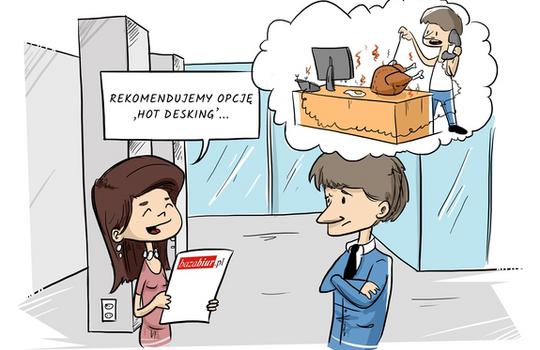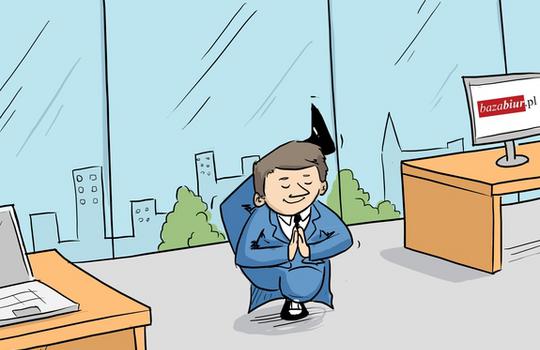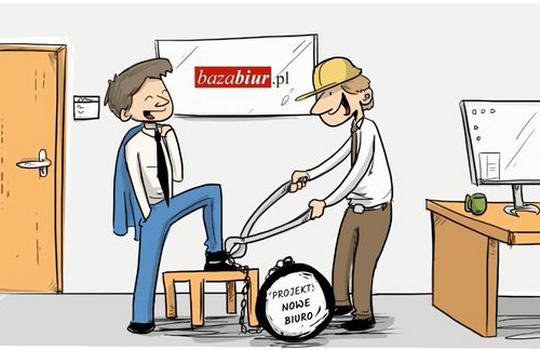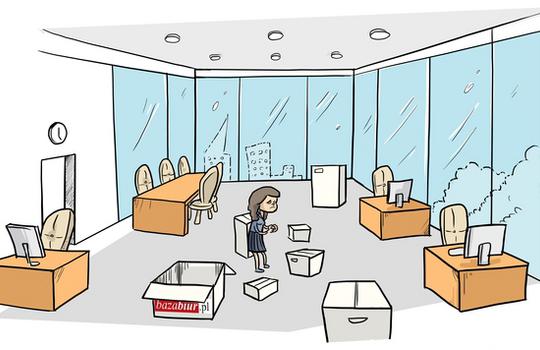Very often I come across situations where occupied office space limits its tenants and becomes increasingly uncomfortable with an inability to meet a company's needs. Tenants suffer from huge discomfort and, more often than not, do not know how to improve this situation.
Define needs
The first step is to define the needs – describe what exactly makes the office uncomfortable. Is it because of intrusive air-conditioning, improper lighting, a lack of sufficient workplaces or maybe because of the small number of conference rooms? Furthermore, one must also ask themselves what will be the needs of office users in both a short- and a long-term perspective.
If a tenant knows what is required and it turns out that the office is too limited for the company's needs, another question should be answered – is the space being used correctly? Is the occupied space sufficient but only needs improving in its functionality or whether the company needs to extend its leased space? Can space reorganization be conducted without affecting business operations? Or does the space require major renovation with all the disruptions that this would entail? It is known that it can be difficult to conduct rearrangement works and actively exploit the space at the same time. If the space occupied by the tenant is insufficient, we must look for other options. Nevertheless, before taking any action we must analyze the lease agreement itself.
Lease agreement analysis
While analyzing a lease agreement, I firstly focus on the time period for which it was signed and what this means for the tenants. Furthermore, I inspect the conditions and costs of agreement “termination”. Is it a short-term or a long-term commitment? Maybe the tenant has the guaranteed expansion rights or right of first refusal already defined in the agreement. In a lease agreement there might be several provisions that might influence a tenant’s decision whether to stay in the scheme or search for a new location. Of course, this is all linked with cost calculations on which I will further elaborate on a little later. The agreement as well as signed conditions (financial and others as well) are analyzed in terms of current market reality, and then we start to consider several options.
Market conditions
A tenant or developer market? Is there a large or small amount of available office space? Does the rent have an increasing or decreasing trend? What other schemes are currently under development? How much do other tenants pay in the currently occupied building and how much do tenants pay in adjacent schemes and schemes with similar standards? Am I overpaying or paying less than others? It is worth conducting a thorough analysis of both the lease agreement and market conditions with the help of an adviser.
1st option – we are staying
We can contact the scheme’s owner and ask if there is any space available. Furthermore, I strongly advise contacting 'neighboring' companies and ask whether they have any future plans. For example, they might have an office that is too big and would be willing to give up a part of it. Or maybe they are considering an earlier than planned relocation. It is also worth considering other alternatives. If there is no possibility of expansion on the same floor, maybe space can be found in another part of the building? When convenient space is found in the occupied scheme, a tenant might try to swap a smaller space for a larger area – and as a consequence seek lease agreement restructuring as well as a renegotiation of lease conditions. It is always worth using such options in order to eliminate inconvenient agreement provisions and add useful rights which were not considered when signing the first lease agreement. Sometimes the scheme’s owner, who wants his tenants to stay in the building, can provide several changes and offer a bigger space. Sometimes, the owner might even absolve a company from a commitment in order to offer additional space for a developing tenant that is of key importance to the scheme.
Costs
It is always worth checking real costs related to the abandoning of previously occupied space as well as focusing on the provisions regarding the obligation to returning an occupied space to its previous condition (so called reinstatement provisions). One time, one of the tenants with whom I had been cooperating had to recreate and build a cabinet system on the previously occupied space because that was its primary condition before it was rearranged into an open space. Needless to say, it was a very costly investment.
2nd option – we are leaving
If there is no opportunity to expand in the occupied scheme and the signed agreement will be binding for several further years, we can check the alternatives provided by the scheme’s owner office building portfolio (it may enable us to relocate from a smaller to a larger space within one portfolio). Furthermore, a sublease and relocation are worth considering as well.
Sometimes the owner of a newly-developed scheme is so determined to sign an agreement with a particular company that he takes over its obligations from the previous scheme.
Opportunities
There are numerous opportunities and there is always a solution. It is worth using advisor knowledge and experience so that an office will not be limiting and will become comfortable, sufficient and meet all of a company's requirements. While renegotiating agreements we focus on including provisions that will guarantee future maximum space flexibility in case the office becomes too tight.











